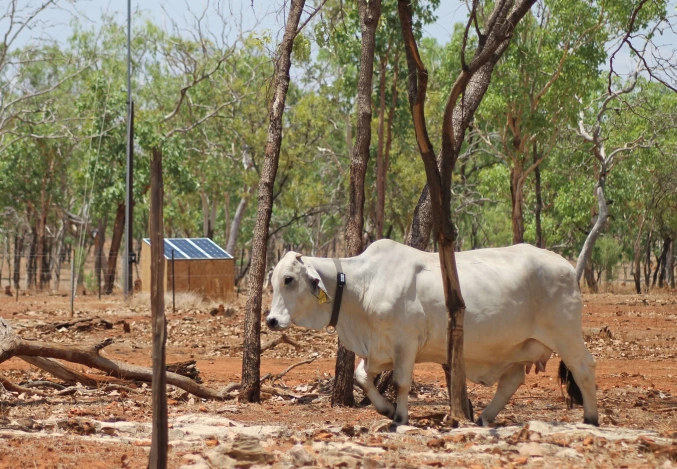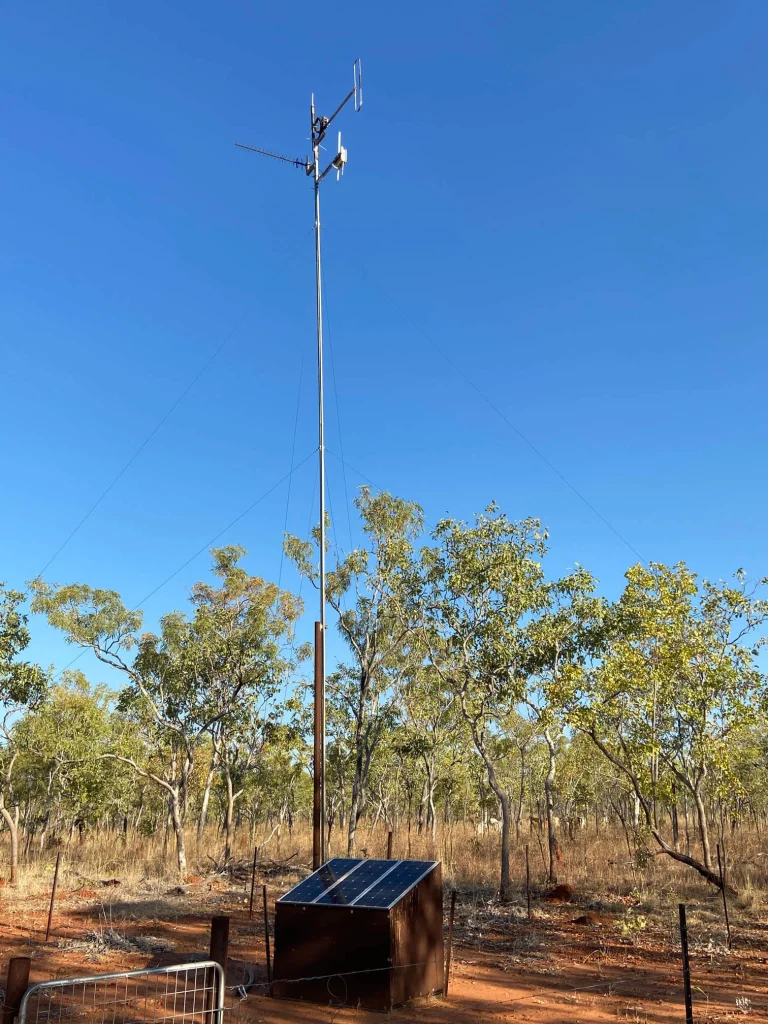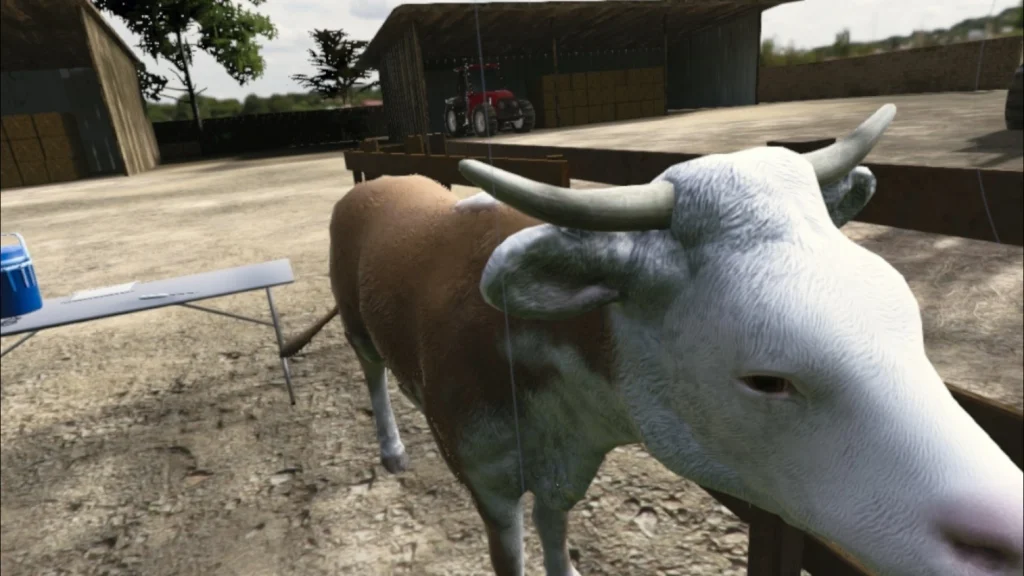
Technology improving calf survival in northern Australia
Aug 28 2020

As calving in northern Australian gets underway, technology that includes birth sensors and GPS-tracking collars is providing clues to help producers bring down the rates of calf mortality in the beef industry.
The Calf-Watch project, co-funded by the Northern Territory Department of Primary Industry and Resources and MLA, is seeking to get to the bottom of a problem that costs northern beef producers around $54 million annually.
Historically, it has been difficult to investigate and reduce calf loss, as calving females are hard to find in large paddocks, and close observation during calving disturbs animals and alters the cows’ behaviour. Calf carcasses are equally hard to find, so in many cases, it hasn’t been possible to conduct autopsies to determine the cause of death.
Researchers at the University of Florida have developed a system to remotely monitor calf loss. Over the past couple of years, the Calf-Watch project team has been collaborating with the US researchers to adapt their system for use in northern Australia.
Sensors that signal calving
The University of Florida system involves placing sensors into the birth canal of pregnant cows up to four months prior to calving. When the cow starts calving, the birth sensor is expelled and the change in temperature triggers a signal that is picked up by an antenna mounted on a tower in the paddock. This signal goes through a gateway on the tower to the internet and results in researchers being notified that the cow has calved. They can then locate the calving site and record observations.
This system has been working well in Florida, but there were challenges to overcome for it to be viable in the conditions of northern Australia.
One such challenge was connectivity. Mobile phone coverage in the Northern Territory is still very patchy, so the Calf-Watch team had to find a way to send the birth sensor signals to the internet in places where mobile phone coverage is limited. Comcat, a local communication technology business in Katherine, assisted with this aspect of the project.
Another challenge was to design towers that could work effectively in the harsh NT environment. The team developed a tower that was durable, cost-effective, and able to pick up birth sensor signals from within a 2km radius of the tower.

Satellite-linked GPS tracker collars on cattle
A third challenge was finding the expelled sensors after calving. The solution was to add a satellite-linked GPS tracker collar to each cow, so researchers could determine where she was when the calving alert sounded.
To have a chance of finding the expelled sensor, each collar had to ‘ping’ at least every 15 minutes, with data accessible in real-time. The collar batteries needed to last at least four months, to enable cows to be found throughout the calving period. At the time, the only company that could meet the project requirements was Smart Paddock, an Australian-based company providing real-time information to producers via a smart collar and ear tag technology.
In August 2019, GPS tracking collar birth sensors were inserted in 200 pregnant females, in what was at the time the largest known use of GPS tracking collars on cattle.
The collars also contain accelerometers, which are showing promise in identifying the time of calving from changes in the animal’s movement patterns. In the future, this accelerometer data may be able to replace birth sensors to identify the time of calving. It is less invasive, less expensive, less time-consuming, and removes the need for one set of technology.
During this first year of the trial, alerts were received from 85 percent of the expelled birth sensors. If the GPS tracking collar was working at that time, the cows were able to be located and observations collected.
One of the findings from the first year was that extreme temperatures and large temperature variations caused issues with some of the collars. The collars have been enhanced for the 2020 season to cope with the tough conditions.

Trial results show reasons for calf loss
The 2019 trial results showed calf loss in mature cows was 16.8 percent. The reasons for the losses included:
- Very hot, dry conditions, with a late start to what was ultimately a poor wet season
- The presence of wild dogs
- Dystocia (difficult labour)
- Bottle teats (undesirable teat shape)
- Neonatal septicemia and umbilical cord infections
- A number of deaths due to unknown causes
The birth sensors and tracking collars allowed more calving cows to be observed under extensive conditions than is generally possible without such technology. This is giving new insights into calf loss. For example, bottle teats were discovered to be more of a problem than previously thought. There were cows whose calves died due to bottle teats, but shortly after there was no indication that the cow had bottle teats because the teats had shrunk back to normal size. Therefore, it is likely that cows with bottle teats are remaining undetected in herds and losing multiple calves unless good records are kept.
The team anticipates that data gathered throughout the 2019 and 2020 calving seasons will assist producers to reduce losses by allowing them to identify and then effectively manage the causes of calf death.
Explore Agtech Finder Solutions for cattle breeding and calving
- SmartPaddock
- Cattlelink by Herdlink
- StockMate by eLynx
- eShepherd by Agersens
- Beef Genetics Program by Growsafe
- Kiwipole by Thermo Regulatory Genetics
- Litams App by Litams
Posted in Practical Advice
You Might Also Like
Apr 08 2025
AgTech News Roundup – 3 April
Issue 006: ABARES Snapshot of Australian Agriculture 2025 released, new agtech manufacturing facility for the Darling Downs, and the Beta version of the Foragecaster app now on AgriWebb marketplace.
Read MoreMar 21 2025
AgTech News Roundup – 20 March
Aussie ag valued at $91bn for 2025/26, says ABARES. Plus, what can Australia learn from New Zealand when it comes to renewable energy? All this, and more, in edition #004 of the Fortnightly Finder.
Read MoreMar 06 2025
AgTech News Roundup – 6 March
Aussie ag valued at $91bn for 2025/26, says ABARES. Plus, what can Australia learn from New Zealand when it comes to renewable energy? All this, and more, in edition #004 of the Fortnightly Finder.
Read MoreFeb 27 2025
AgTech News Roundup – 20 February
The latest product launch from connectivity pioneers, is VC broken for AgTech? The Right to Repair, Funding Opportunities and more.
Is AgTech broken for Venture Capital?
With an estimated value of $97m per year, will Australia legislate the Right to Repair? NFF members want to.
Plus: Funding opportunities you may have missed
Read MoreList your company on AgTech Finder.
AgTech Finder helps Australian Farmers and producers find the product that’s right for them.
Register now to be a part of the community, get access to a national platform and start gaining insights to improve your products.
